How the UK's military spending compares to other countries
Discover the actual military expenditure of 25 key nations
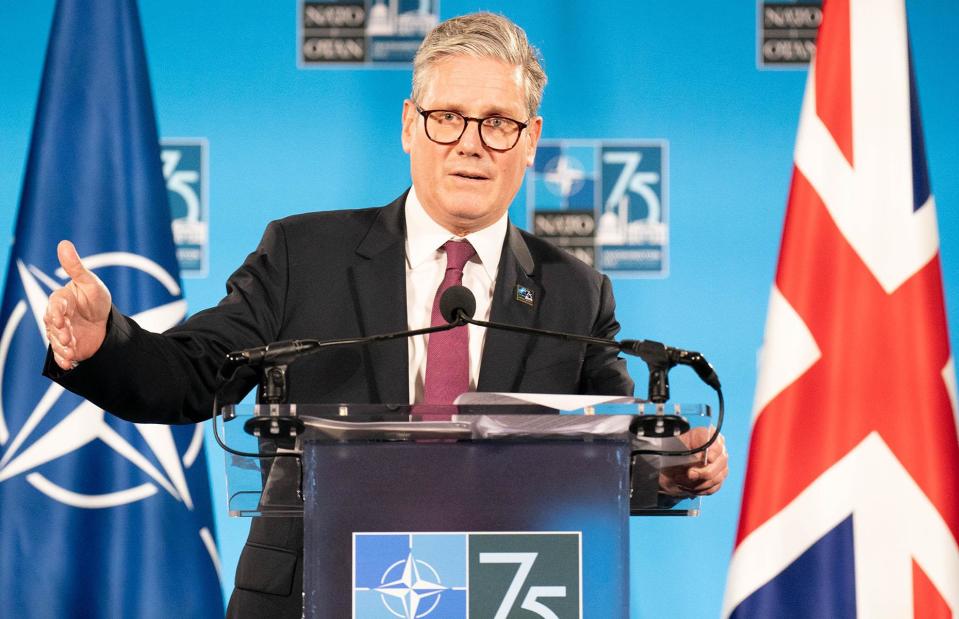
Stefan Rousseau-Pool/Getty Images
Amid the backdrop of war in Ukraine, conflict in the Middle East, and growing tensions between China and the West, global military spending has hit unprecedented levels.
NATO members are at the forefront, with 23 of 32 expected to reach or surpass the much-vaunted 2% of GDP (gross domestic product) target this year. (That's compared to just seven in 2022). And with reports suggesting Donald Trump will force the alliance's members to up the target to 3% if he's re-elected in November, the spectre of a new global arms race is looming large...
Using 2023 data from the Stockholm International Peace Research Institute (SIPRI), which has tracked military outlays since 1949, we've ranked 25 major nations in terms of their percentage of GDP spend on defence, from least to most. We've also included predicted 2024 figures where available. Read on to discover which countries are spending the most on their military and how their outlay compares.
All dollar amounts in US dollars
South Africa: 0.7% of GDP ($2.8bn/$2.2bn)
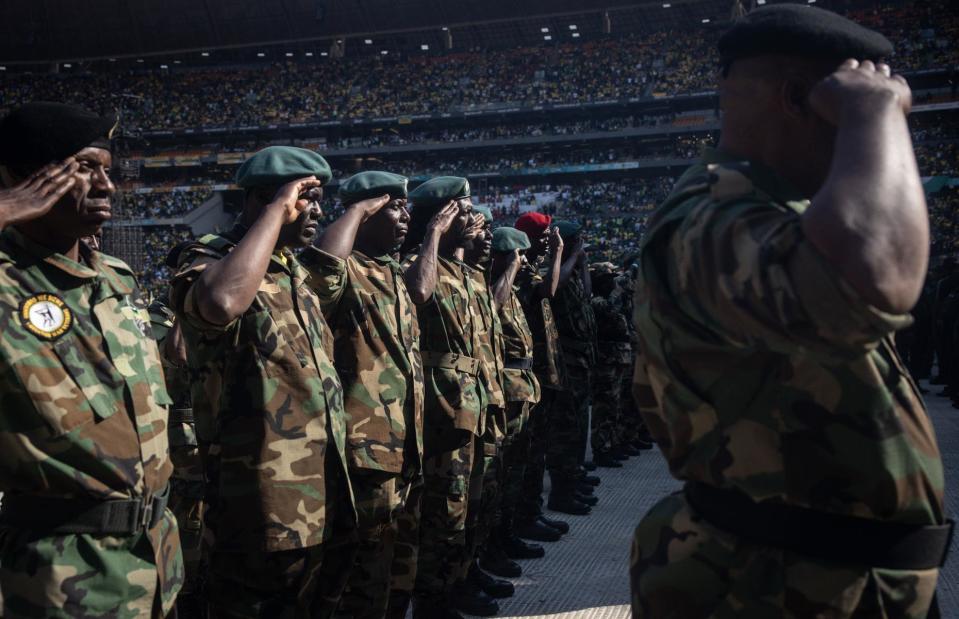
Chris McGrath/Getty Images
South Africa's military spending has been declining in real terms for the past decade. With the nation's economy underperforming, the defence budget fell to just 0.7% of GDP last year, well below the global average of 2.3%.
Experts have warned the nation's armed forces are severely overstretched and underfunded. Dean Wingrin, a correspondent for defence news website defenceWeb, has called this “a disaster” for the South African National Defence Force (SANDF), which is engaged in peacekeeping missions in countries including the Democratic Republic of Congo as well as its domestic operations. Incredibly, 85% of the South African Air Force's fleet is out of action, as highlighted by news website The Conversation, while the Navy's warships are in dire need of repair.
Switzerland: 0.7% of GDP ($6.3bn/£4.9bn)
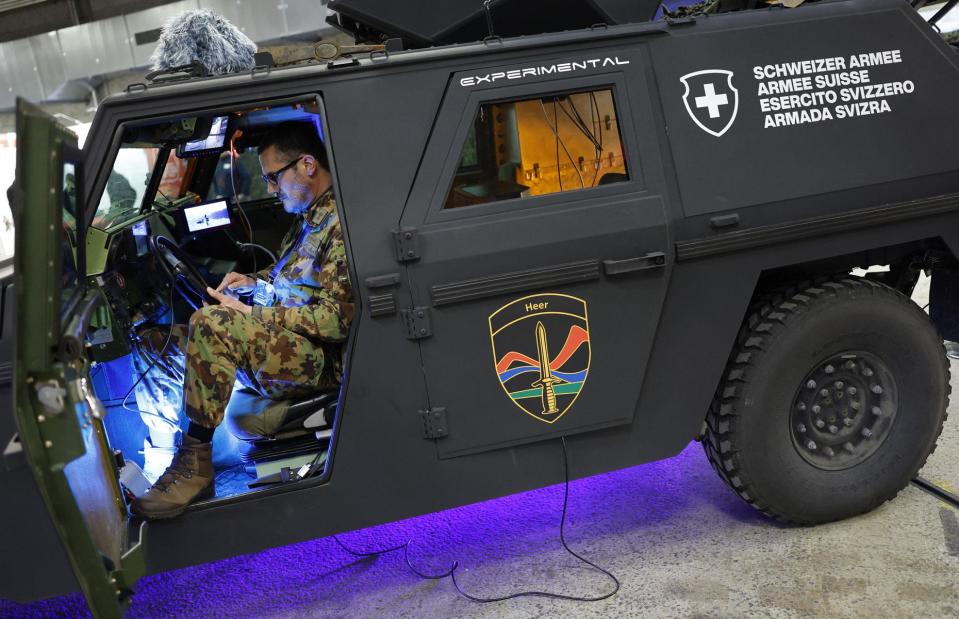
STEFAN WERMUTH/AFP via Getty Images
Switzerland's military spending as a percentage of GDP has fallen by more than 50% since the collapse of communism over three decades ago, as the neutral country sought to benefit from the post-Cold War peace dividend.
However, with the return of war to Europe, Switzerland's downscaled defence expenditure could have dire ramifications. Reports have emerged of a huge military funding black hole, and the Swiss government is seeking to plug it with plans to boost spending by 19% over the next four years. Nonetheless, according to official projections, Switzerland's outlay in terms of GDP will remain below 1% until 2035.
Mexico: 0.7% of GDP ($11.8bn/£9.1bn)
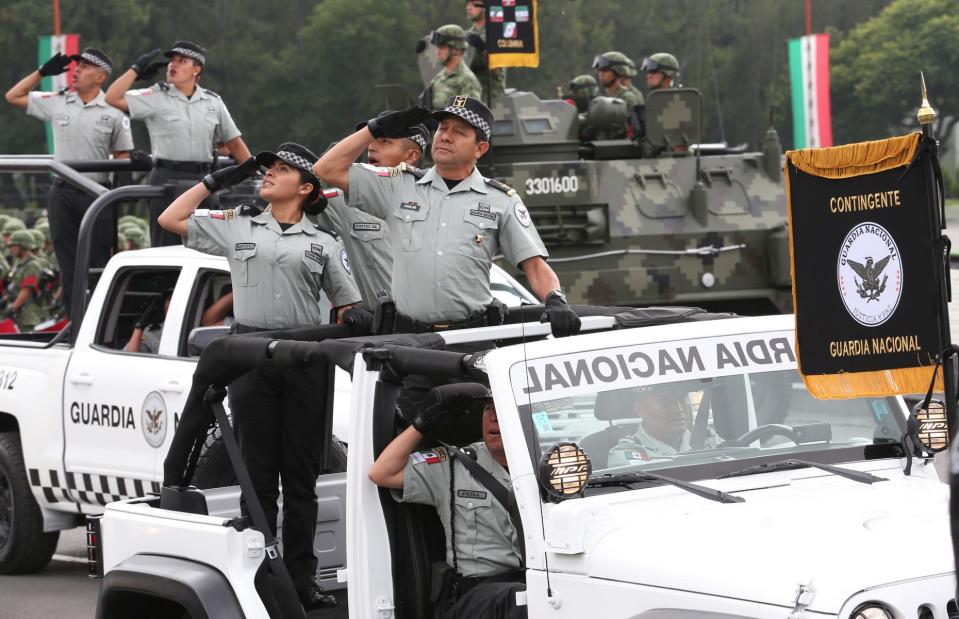
Octavia Hoyos/Shutterstock
Mexico has pursued the Estrada Doctrine, a policy of non-intervention, since 1930. For this reason, the nation tends to avoid overseas conflicts, and its defence spending as a proportion of GDP has been historically low.
That said, military expenditure has risen by 55% since 2014 according to SIPRI, though the increased outlay has predominantly been a response to the deteriorating security situation within the country itself, rather than as a consequence of conflicts beyond Mexico's borders. By way of example, allocations to the National Guard, which is tasked with battling the cartels, increased from 0.7% of the nation's defence budget in 2019 to a hefty 11% in 2023.
Austria: 0.8% of GDP ($4.4bn/£3.4bn)
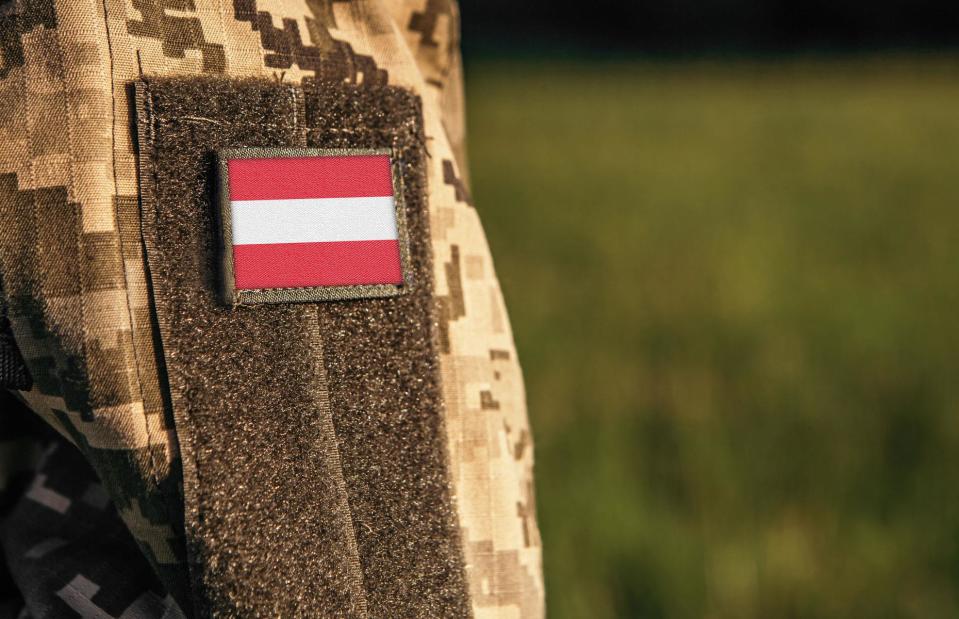
Vovatol/Shutterstock
Austria's permanent neutrality has been set in stone since 1955, when allied troops withdrew from the country and the modern Austrian state was created. Since then, the nation's neutrality has shaped its defence spending, which has remained comparatively minimal.
Other long-standing neutral countries such as Sweden have relinquished the status in the face of Russia's aggression, but Austria is standing firm. That said, Austria has joined the German-headed European Sky Shield Initiative (a project focused on building a ground-based integrated European air defence system) and the government is planning to double its defence spending by 2027.
New Zealand 1.2% of GDP ($3bn/£2.3bn)
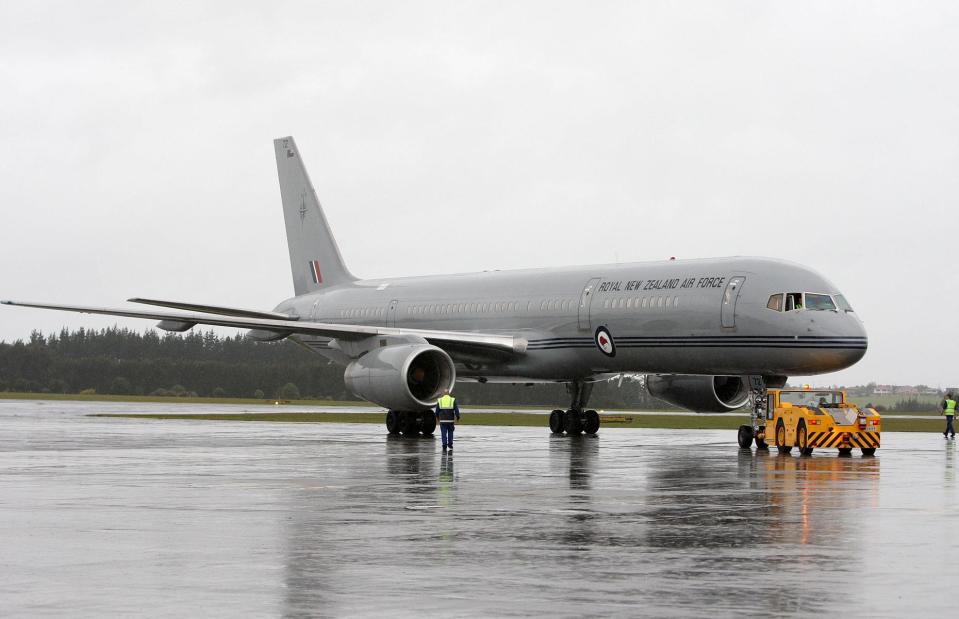
Sandra Mu/Getty Images
With tensions building in the Asia-Pacific region, the New Zealand government is considering joining Australia, the UK, and the US in the AUKUS defence pact and taking on more global missions. Yet according to Reuters, the defence budget for the fiscal year ending in June 2025 has been slashed by 6.6% as the nation's economy splutters. This comes as New Zealand's regional partners, including Japan and Australia, have increased their expenditure.
A number of political figures have expressed a desire to increase defence spending to 2% of GDP, but this would entail drastic belt-tightening elsewhere. In the meantime, New Zealand's armed forces need new recruits, while materiel upgrades are desperately required. Naval craft are out of service due to a lack of personnel, and the New Zealand Air Force's ageing Boeing 757-2K2s reportedly keep breaking down.
Japan: 1.2% of GDP ($50.2bn/£38.8bn)
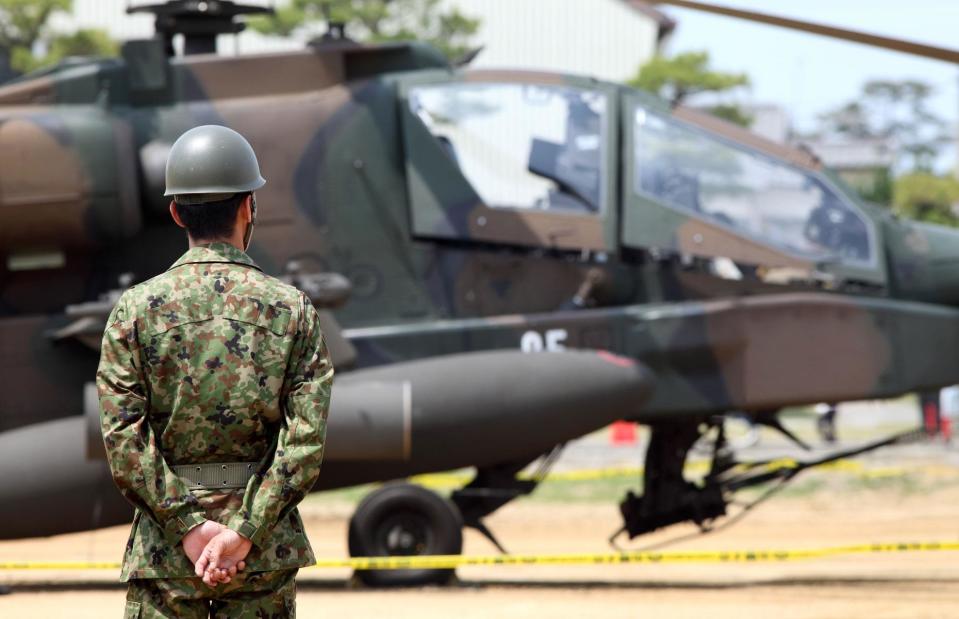
akiyoko/Shutterstock
Japan allocated $50.2 billion (£38.8bn) to its armed forces in 2023, an 11% increase from 2022 and 31% more than 2014. The nation's military spending is expected to reach 1.6% next year, and the government plans to hit the magic 2% of GDP figure by 2028.
The rush of spending marks a break from Japan's long-standing pacifism. The U-turn has come about as China's increasingly assertive stance towards Taiwan and its claims on the South China Sea ignite tensions in the region. Tokyo is reportedly also concerned about North Korea's nuclear weapons programmes, which has perhaps contributed to the recent boost in spending.
Canada: 1.3% of GDP ($27.2bn/£21bn)
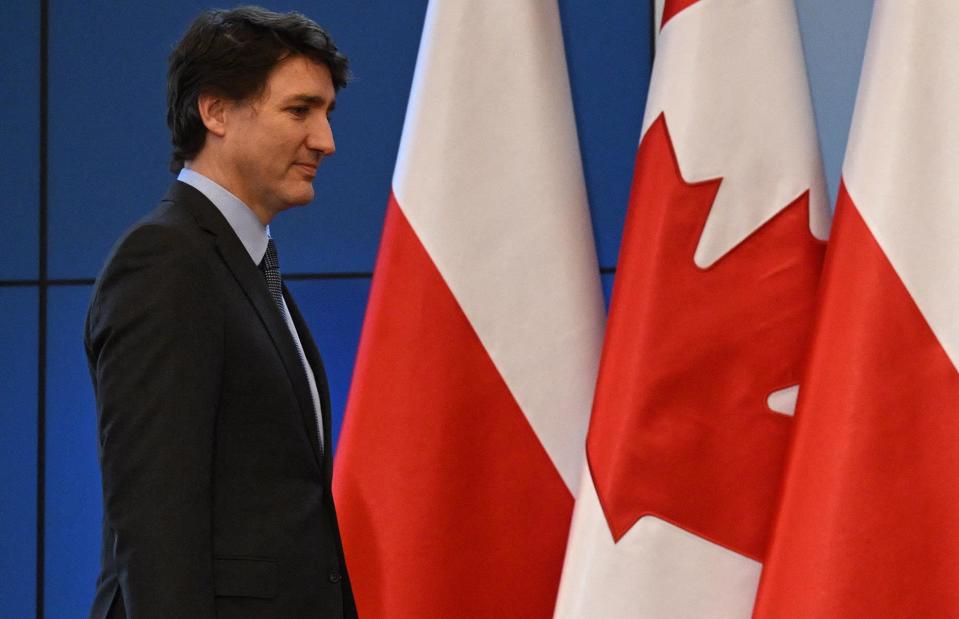
SERGEI GAPON/AFP via Getty Images
The Canadian government has drawn criticism, both at home and abroad, for its relatively small defence spend as a proportion of GDP. Last year, Canada's expenditure amounted to $27.2 billion (£21bn), just 1.3% of the nation's annual output. This makes it one of NATO's most conservative spenders.
Speaking at the recent NATO summit in Washington DC, Canadian PM Justin Trudeau revealed the nation would reach the 2% of GDP target by 2032. However, according to Canadian network CTV News, business leaders and stakeholders are sceptical that the target can be met given the prime minister's lack of detail and the pressure the plan would put on public finances.
Spain: 1.5% of GDP ($23.7bn/£18.3bn)
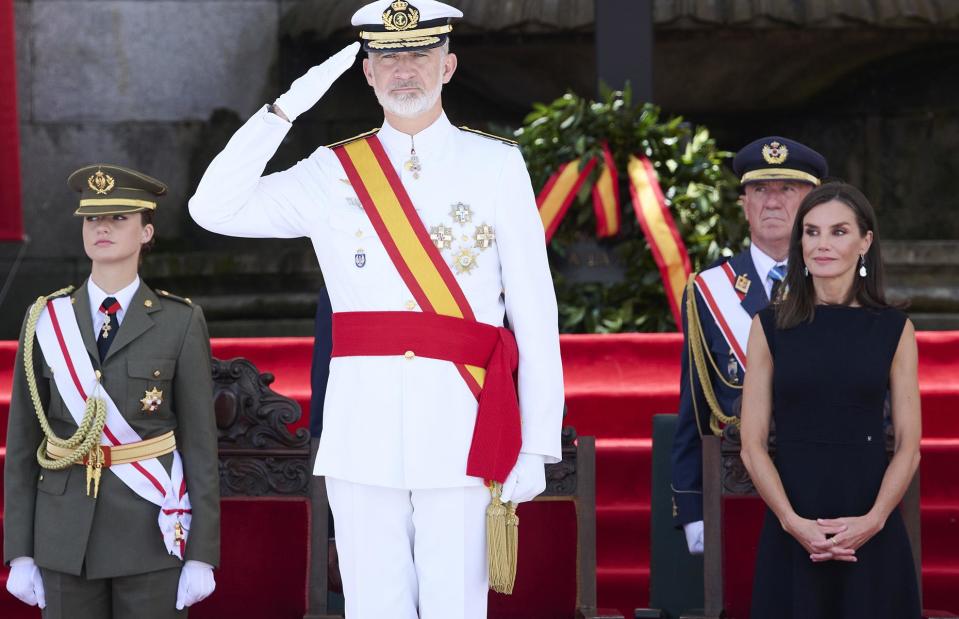
Carlos Alvarez/Getty Images
Spain's defence spend as a share of GDP stood at 1.5% in 2023. But according to NATO estimates, the nation's outlay for 2024 is expected to come in at just 1.28%. This would make it the alliance's least generous contributor in relative terms.
Spain has bolstered its military spending in recent years. When the government of Pedro Sánchez came to power in 2018, the GDP spend was just 0.93%. According to Spanish Defence Minister Margarita Robles, the nation is poised to reach the 2% NATO goal in 2029, three years before Canada is expected to meet the target.
Germany: 1.5% of GDP ($66.8bn/£51.6bn)
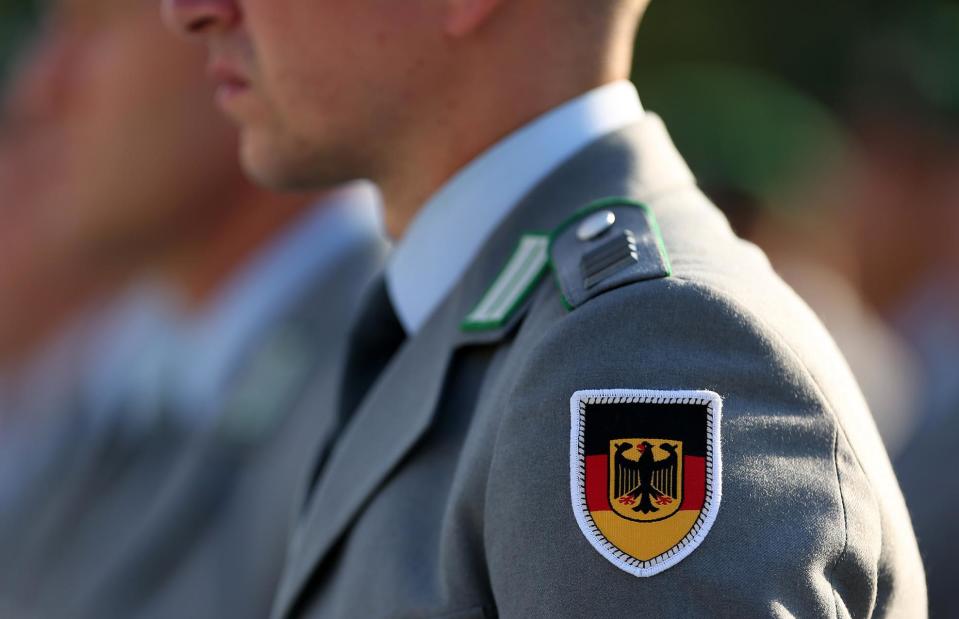
Maryam Majd/Getty Images
Germany devoted 1.5% of its GDP to defence last year, equalling Spain's outlay in relative terms. This year, though, the figure is set to hit the 2% NATO goal for the first time since the end of the Cold War.
Europe's biggest economy will allocate $73.4 billion (£56.6bn) to defence in 2024, which is just over 2% of the country's GDP, according to news agency DPA. Germany is taking the threat from Russia very seriously and is on a major re-arming drive. The nation's government is also contemplating reintroducing compulsory military service, a scheme it abandoned in 2011.
China: 1.7% of GDP ($296bn/£228bn)
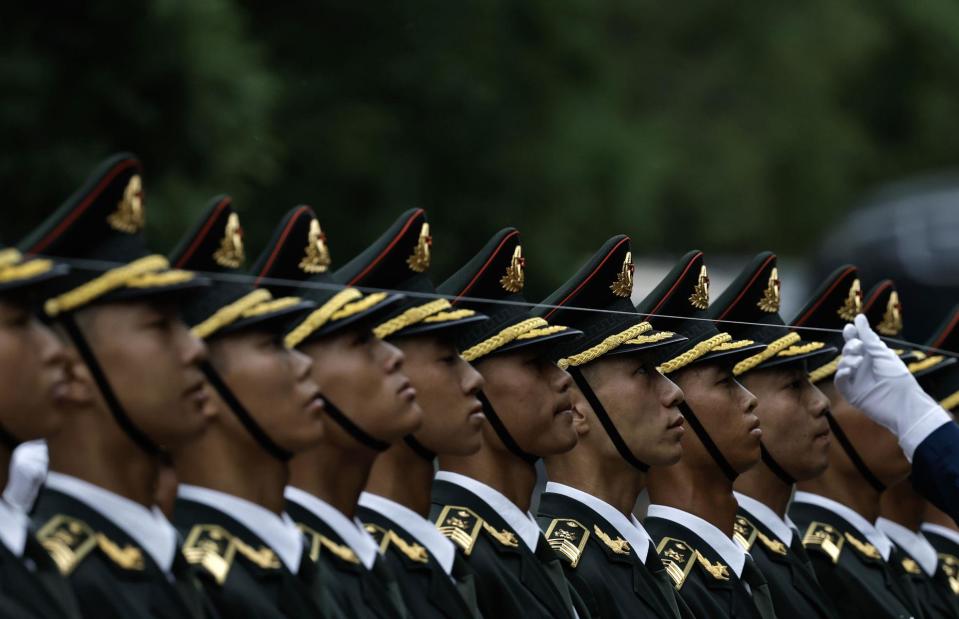
Tingshu Wang-Pool/Getty Images
After the US, China is the world's second-biggest military spender in absolute terms. Last year, the People's Republic ploughed an estimated $296 billion (£228bn) into defence, according to SIPRI. This represents 1.7% of the country's GDP.
Worryingly for the West and its regional allies, China recently dropped the mention of “peaceful reunification” with Taiwan, reflecting its hardening stance towards what it views as a breakaway province. Adding to the concerns, Beijing is hiking its defence spending by a hefty 7.2% this year. The extra funds will be spent on combat readiness and “preparation for war”, as per The South China Morning Post, a chilling move likely to have significant global implications.
Australia: 1.9% of GDP ($32.3bn/£24.9bn)
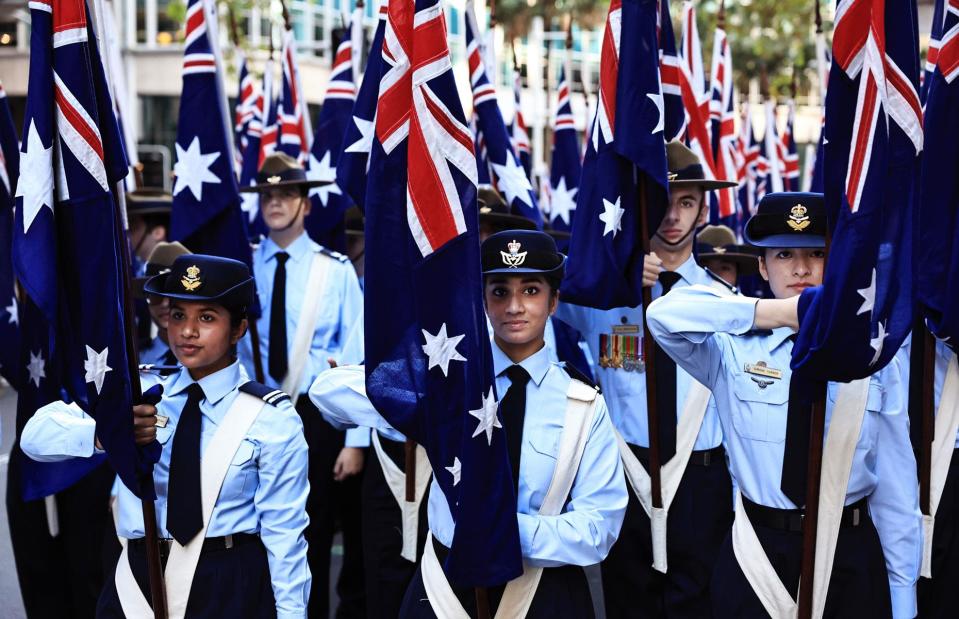
Jenny Evans/Getty Images
As China flexes its weight in the Asia-Pacific region, Australia is taking no chances with defence. Last year, a panel of national security experts convened by Australian newspapers The Sydney Morning Herald and The Age warned that war with the People's Republic could come as soon as 2026, with a Chinese invasion of Taiwan a major potential trigger.
The AUKUS member is spending $36.8 billion (£28.4bn) on defence in 2024, a considerable increase from last year that represents a little over 2% of the country's GDP. During the next decade or so, Australian defence expenditure is expected to reach around 2.4% of GDP, according to Reuters.
Now let's take a look at the countries spending 2% of GDP or more...
France: 2.1% of GDP ($61.3bn/£47.3bn)
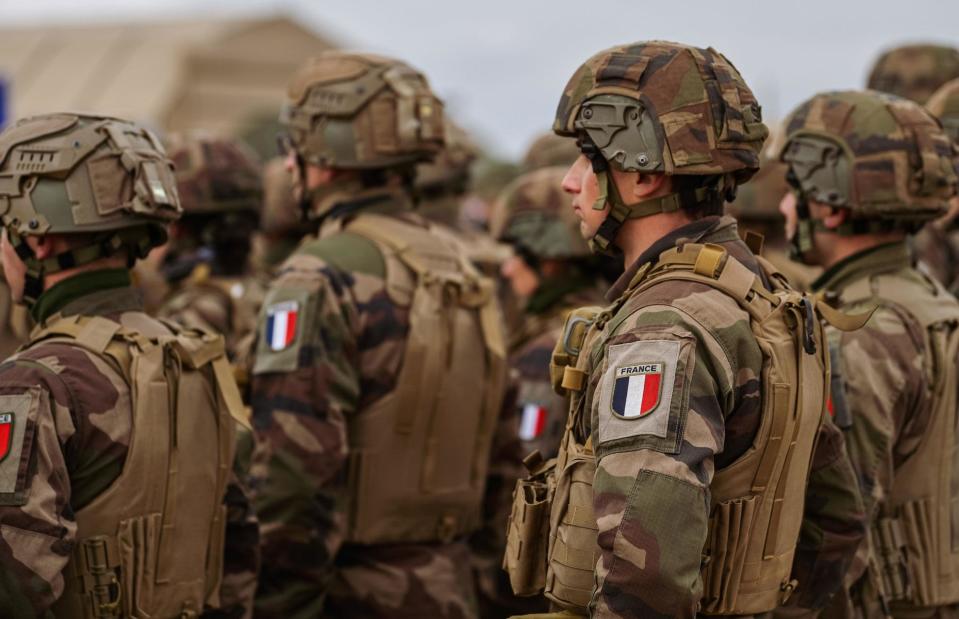
Dragos Asaftei/Shutterstock
France has achieved the 2% of GDP military expenditure goal set by NATO sooner than expected. Last year, the EU's second-largest economy spent $61.3 billion (£47.3bn) on defence, which equates to 2.1% of its GDP.
France is one of several countries benefitting from the re-arming trend, according to SIPRI. The country has overtaken Russia to become the world's second-most important weapons exporter after the US, accounting for 11% of the global market.
Taiwan: 2.2% of GDP ($16.6bn/£12.8bn)
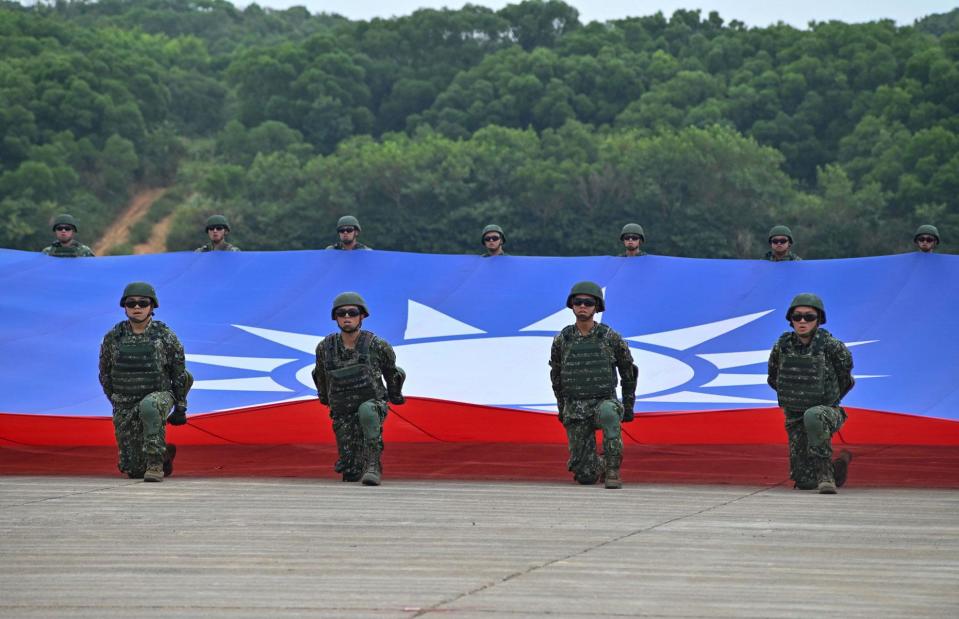
SAM YEH/AFP via Getty Images
As tensions with China run high, Taiwan's defence spending increased by 11% last year, reaching $16.6 billion (£12.8bn).
Taiwan has been steadily increasing its military spend for the past seven years, and the total for 2024 is expected to come in at over $19 billion (£14.6bn). That translates to 2.5% of the nation's GDP. Yet according to the Atlantic Council, the outlay is insufficient and Taiwan needs to increase its expenditure to at least 3% of GDP if it wants to strengthen its military capabilities and send a powerful deterrent message to Beijing.
UK: 2.3% of GDP ($74.9bn/£57.8bn)
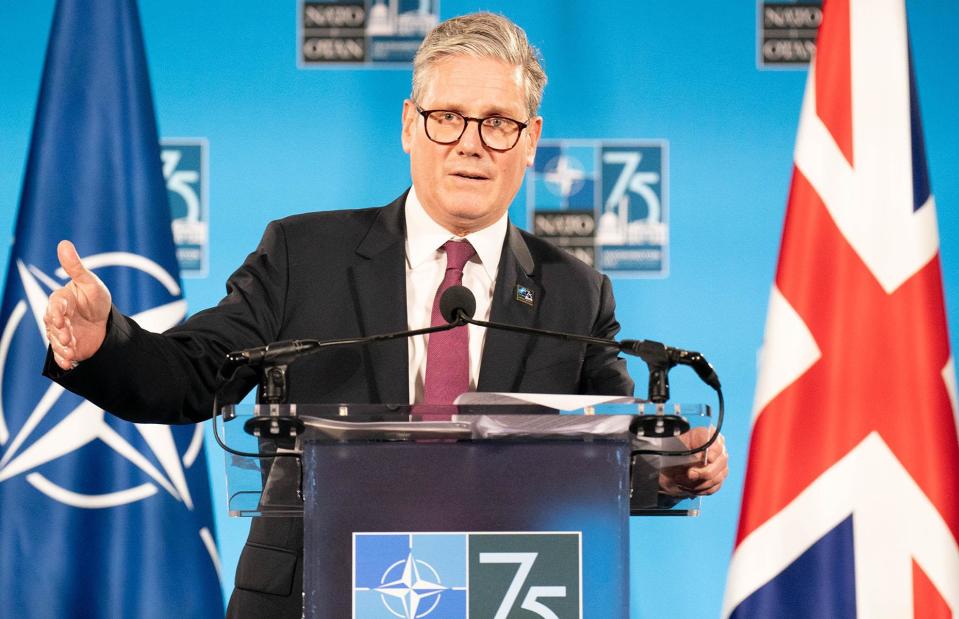
Stefan Rousseau-Pool/Getty Images
The UK hit the global average military spend of 2.3% of GDP in 2023. Last year, the NATO and AUKUS member allocated $74.9 billion (£57.8bn) to defence.
Britain's new Prime Minister, Labour leader Keir Starmer (pictured), has made a “cast iron” commitment to increase the outlay to 2.5% of GDP in response to growing threats from Russia and China – but only if finances allow. The UK leader has refused to put a timeline on when this will happen, unlike his Conservative predecessor, Rishi Sunak, who pledged to achieve the figure by 2030.
India: 2.4% of GDP ($83.6bn/£64.5bn)
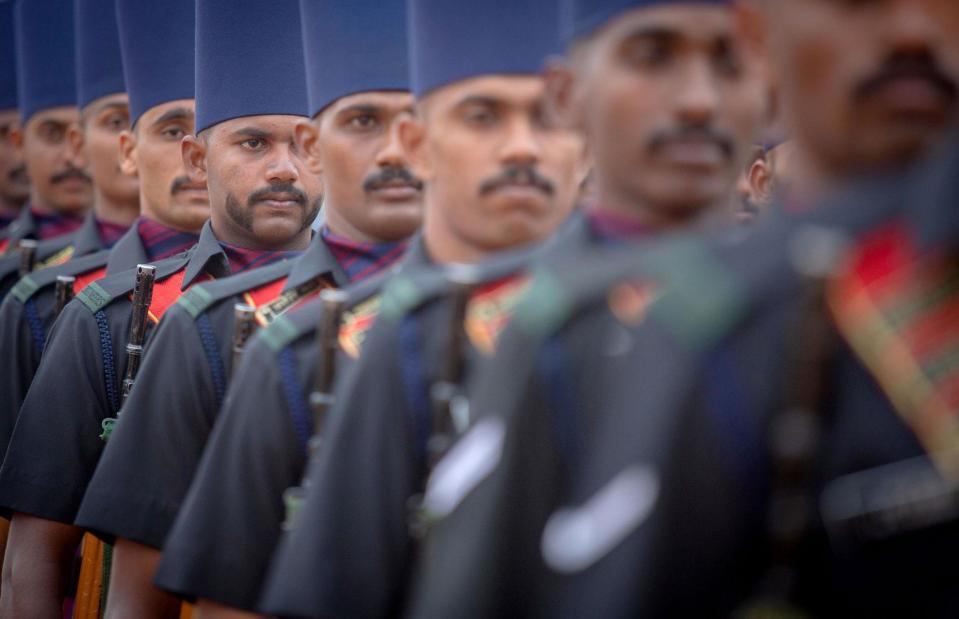
Abhishek Chinnappa / Getty Images
Last year, India was the world's fourth biggest defence spender in absolute terms after the US, China, and Russia. Its outlay of $83.6 billion (£64.5bn) represents 2.4% of the nation's GDP.
India's traditional arch-enemy, Pakistan, had been New Delhi's primary defence concern for decades, but in recent years China has emerged as the biggest threat amid growing border tensions. India is hiking up military expenditure, but according to top national security analyst Dr Amit Singh, who spoke to The Economic Times newspaper in early July, the budget “is not sufficient given the threat perception faced by India from China.”
Singapore: 2.7% of GDP ($13.2bn/£10.2bn)
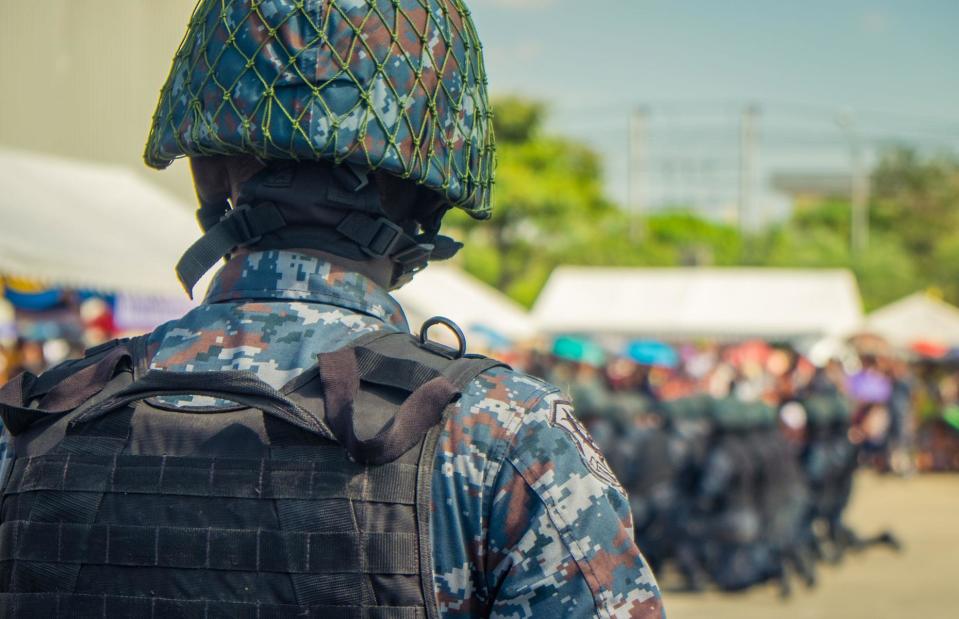
Kittipong33/Shutterstock
Singapore devoted $13.2 billion (£10.2bn) to defence in 2023. The figure equates to 2.7% of the city-state's GDP, an increase from 2.6% in 2022.
As reported by The Straits Times, Defence Minister Ng Eng Hen recently announced the nation's military spending will be around 3% of GDP over the next decade, barring any conflicts or wars. In light of the tense global situation, and China's aggression in particular, the minister has judged the threat of global or regional conflicts as “non-zero” – a step up from the previous estimation of “unlikely”.
Pakistan: 2.8% of GDP ($8.5 billion / £6.6bn)
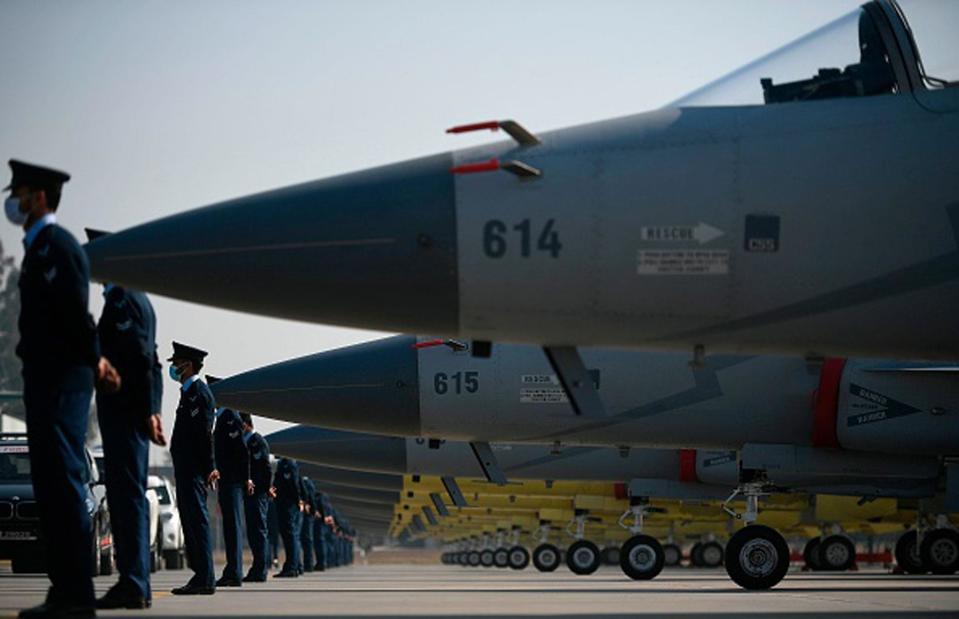
AAMIR QURESHI/AFP via Getty Images
Pakistan is chiefly preoccupied with its long-simmering conflict with India and fighting the TTP terrorist group, aka the Pakistani Taliban. Unlike India, Pakistan is an ally of China and has long been considered Beijing's “Iron Brother” in the region.
The nation's military spending in GDP terms increased from 2.6% in 2022 to 2.8% in 2023 – though with the country's finances in dire straits, the monetary outlay actually decreased from $11 billion (£8.5bn) to $8.5 billion (£6.6bn). Pakistan's defence budget for the 2023 to 2024 fiscal year has been hiked by 16% as the country's security situation worsens and tensions with India build. The sharp increase has drawn the ire of the International Monetary Fund (IMF), which agreed a $3 billion (£2.3bn) bailout with the Pakistani government last year to rescue the nation's ailing economy.
South Korea: 2.8% of GDP ($47.9bn/£37bn)
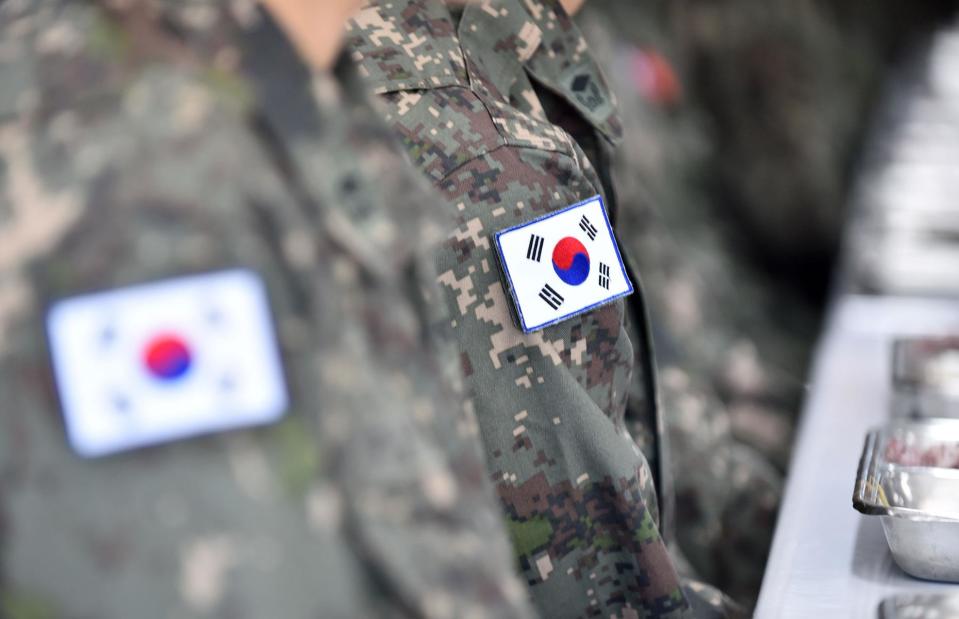
Yeongsik Im/Shutterstock
South Korea's military spending as a proportion of GDP increased from 2.7% to 2.8% in 2023, with the monetary outlay up $1.5 billion (£1.2bn).
Tensions between South Korea and China are building but the real existential threat comes from North Korea. SIPRI hasn't been able to collate data on North Korea's military expenditure, but it's thought to represent a staggering 25% of the country's GDP. Relations with the Kim regime have reached new lows as it becomes increasingly hostile towards its southern neighbour. As a consequence, Seoul has embarked on a military spending spree.
The South Korean government intends to spend a whopping $263 billion (£203bn) over the next five years to buttress its defence capabilities and upgrade the "Three-Axis" system to counter a North Korean attack with artificial intelligence and other advanced tech.
Colombia: 2.9% of GDP ($10.7bn/£8.3bn)
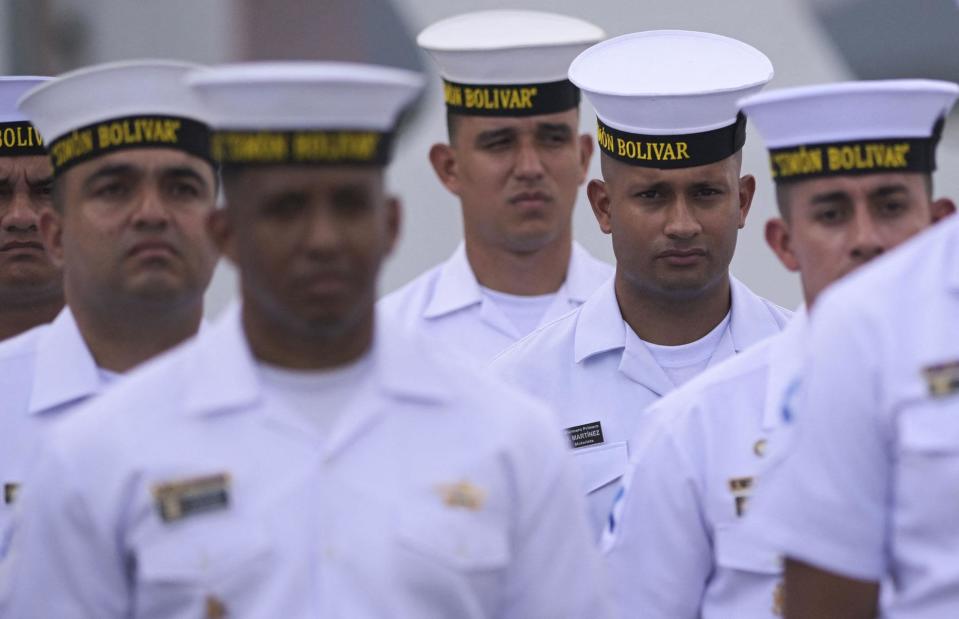
JOAQUIN SARMIENTO/AFP via Getty Images
Unlike many other countries, Colombia is riven with homegrown issues and the nation's military expenditure is mainly concentrated within the country. Although Brazil spends more overall, Colombia has the biggest outlay in South America in terms of GDP, though the figure fell from 3.5% in 2020 to 2.9% last year.
According to Global Data, Colombia's military expenditure is increasing again. This is partially motivated by moves to tackle threats from armed militias, despite a recent six-month truce with the ELN guerilla group. Other key concerns include an ongoing border dispute with neighbouring Venezuela.
USA: 3.4% of GDP ($916bn/£707bn)
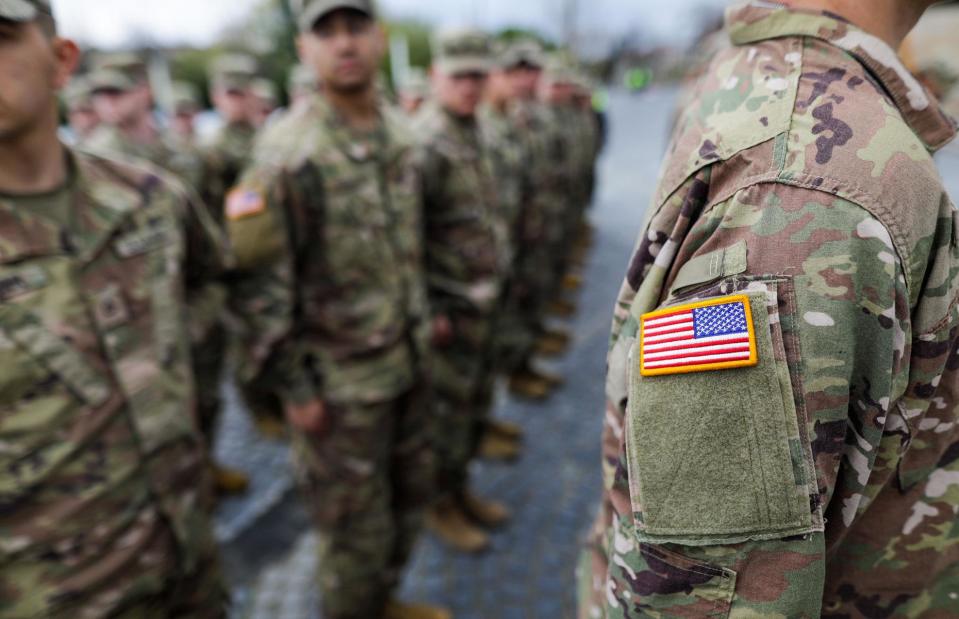
Mircea Moira/Shutterstock
America spends considerably more on defence than any other country. Last year, the US bumped up its military expenditure by 2.3%, with the total reaching an astronomical $916 billion (£707bn). This is more than three times higher than what the global runner-up China spent, and represents a sizeable 3.4% of the nation's GDP.
With the US election fast approaching, analysts are speculating about what Donald Trump's re-election could mean for US defence. As mentioned, Trump would likely push NATO members to increase their contributions to as much as 3% of GDP. According to website Politico, he's also likely to reorganise the alliance so that European nations take a more active role, and cut a deal with Russia to end the war in Ukraine (which would probably lead to Ukraine ceding territory to its invader). What's more, Trump has expressed his desire to be tougher on nations including China and Iran.
Poland: 3.8% of GDP ($31.6bn/£24.4bn)
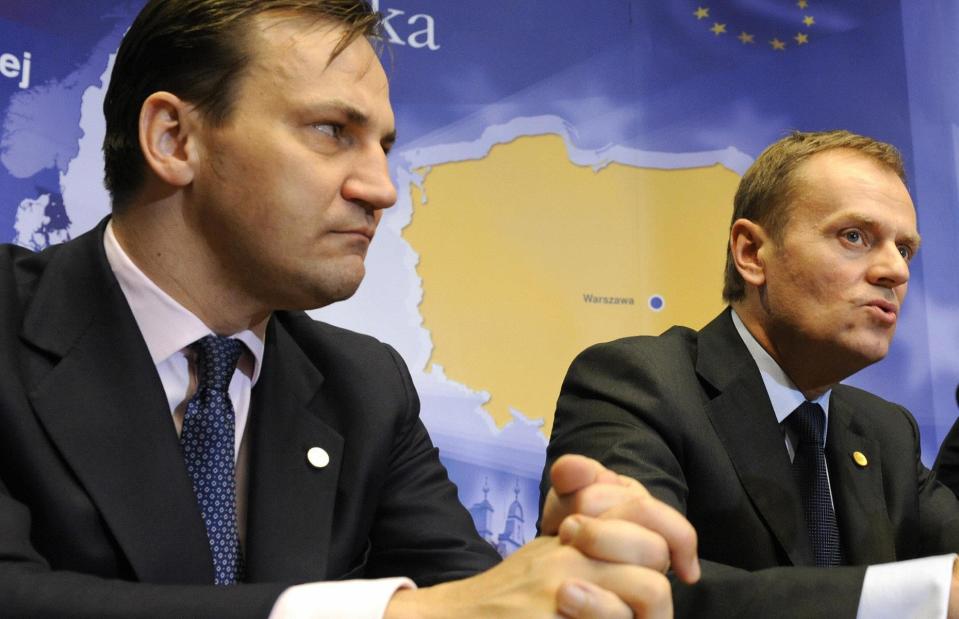
JOHN THYS/AFP via Getty Images
Poland is NATO's top spender in GDP terms, devoting 3.8% of its annual output. That's well in excess of the 2% goal and even the potential 3% threshold Trump is reportedly considering. Last year, the Eastern European nation spent $31.6 billion (£24.4bn) on defence.
The GDP outlay stood at just 2.2% in 2022 when Russia invaded Poland's neighbour Ukraine. Needless to say, Warsaw – which has taken a strong pro-Ukraine stance – is going all out to counter Russian aggression, and Polish Foreign Minister Radoslaw Sikorski (pictured here with Polish PM Donald Tusk) recently told Bloomberg Television that the GDP spend will increase to 5% next year.
Israel: 5.3% of GDP ($27.5bn/£21.2bn)

Olga Mukashev/Shutterstock
Israel's invasion of Gaza, which was triggered by Hamas' attack on 7 October 2023, is expected to cost the country around $70 billion (£55.1bn) through 2025. That's according to the Bank of Israel, which recently increased its previous estimate of $55 billion (£43.3bn).
The expense of the conflict is already evident in the nuclear power's military spend figure for 2023, which amounted to $27.5 billion (£21.2bn) or 5.3% of the nation's GDP. This is a notable increase from 2022, when the number was $23.4 billion (£18.4bn) and the outlay as a proportion of GDP stood at 4.5%. The Hamas war – and to a lesser extent, the conflict with Hezbollah – are putting a lot of pressure on Israel's public finances, with the country's overall budget deficit swelling to 7.6% in June, up from 4.2% in 2023.
Russia: 5.9% of GDP ($109bn/£84.5bn)
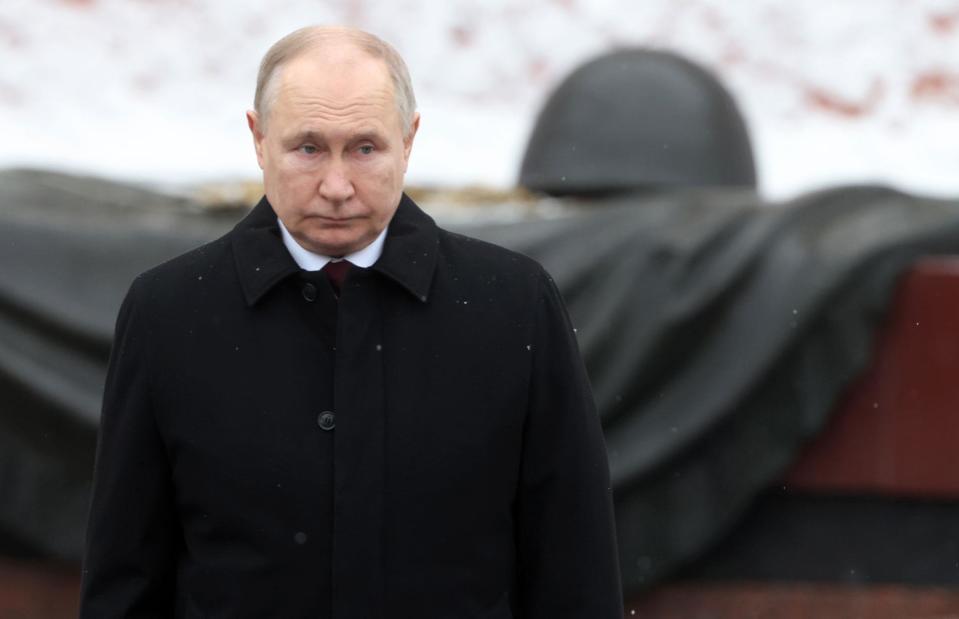
Contributor/Getty Images
As its invasion of Ukraine entered a second year, Russia's military spending skyrocketed in 2023, reaching an estimated $109 billion (£84.5bn), which is 5.9% of its GDP.
The nation's defence expenditure is expected to hit $140 billion (£110.2bn) or 7.1% of GDP this year. President Putin has put the Russian economy on a war footing. This military spending is fuelling impressive growth, while friendly nations such as China and India are propping up the country's finances by buying its oil and other natural resources. Still, by basing its entire economy on the conflict, Russia finds itself between a rock and a hard place. Writing for news website The Conversation, economist Renaud Foucart argues Russia can't afford to lose the war, nor can it afford to win it. Whatever happens, the country's long-term economic prospects aren't looking good.
Saudi Arabia: 7.1% of GDP ($75.8bn/£58.5bn)
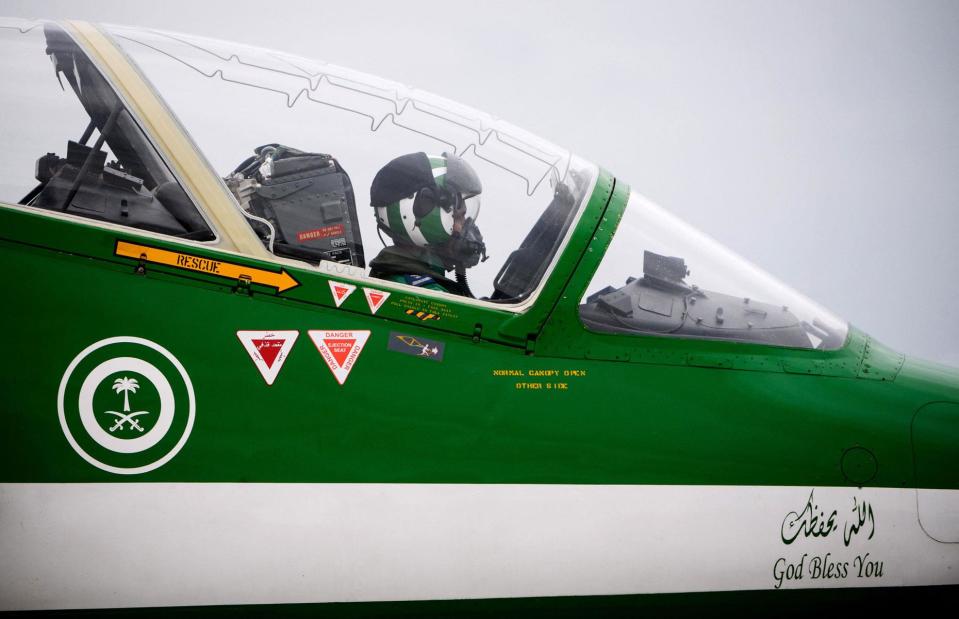
CLEMENT MAHOUDEAU/AFP via Getty Images
Saudi Arabia's defence spending increased marginally from $75 billion (£59.1bn) in 2022 to $75.8 billion (£59.7bn) last year, but the outlay as a proportion of GDP fell from 7.4% to 7.1%.
In any case, Saudi Arabia – which is leading an intervention in the Yemen War – was the Middle East's top arms purchaser and the region's biggest military spender overall. The affluent Gulf State has boosted its defence budget for 2024 by 3.9%, no doubt in response to growing instability in the region. Interestingly, Riyadh is strengthening defence ties with China, which is keen to expand its influence in the region to the detriment of the US.
Ukraine: 36.7% of GDP ($64.8bn/£50bn)
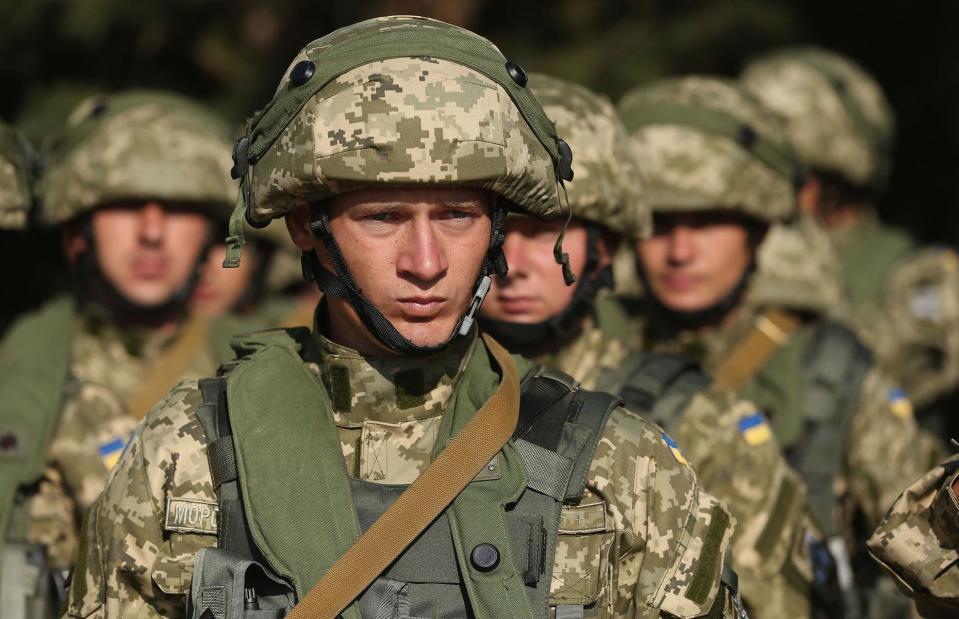
Sean Gallup/Getty Images
Ukraine is paying a heavy price for Russia's invasion. In addition to the unimaginable human suffering, the war has been enormously costly from a financial point of view.
Last year, the embattled nation devoted $64.8 billion (£50bn), a massive 36.7% of its GDP, to defend its territory from Putin's forces. And despite bountiful support from Western allies, Ukraine could very well default on its debts when a two-year repayment suspension expires on 1 October. While government creditors such as the UK have agreed to suspend debt repayments to 2027, Ukraine's private creditors – which include US firms BlackRock, Fidelity and PIMCO – haven't extended the deadline as far into the future.
Now discover which countries are set to be the powerhouse economies of 2038